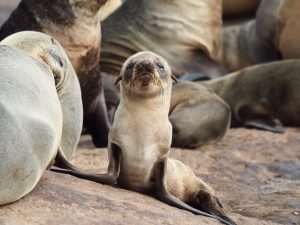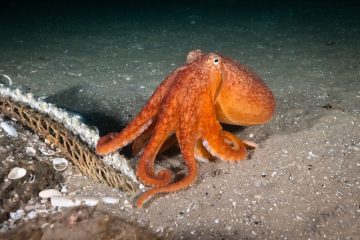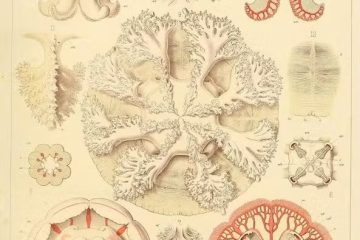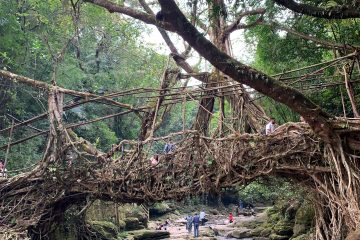Sea Lions and Seeing the Future

It might have been the repetition that got me, but I think it was the sea lions.
The repetition came in the form of all the Covid-19 “seconds.” A second set of spring holidays during quarantine. So many friends’ social media posts about their “second Covid birthdays,” their second time celebrating during the stay-at-home. And of course behind all those smaller repetitions stands the stunning repetition of death, in the news and in personal circles: the tragic reality that so many birthdays won’t be celebrated again due to this pandemic’s devastation.
Here in Minnesota, this spring brought yet another breath-taking repetition: another black man killed by police. Daunte Wright was only twenty years old, the classmate of my college students when they were in high school together. Daunte was killed in a city already vigilant and tender during the trial of the police officer who killed George Floyd. A sense of “not again” shook us: This is how it felt last spring, we were saying to each other, as neighborhood buildings burned again and as protestors were teargassed, again.
So maybe it was the repetition that made my otherwise optimistic spirit finally feel near its breaking point. But I think it was the sea lions.
One night scrolling social media probably trying to distract myself from the repetitions listed above, I stumbled into an online article about 25% of the sea lions on the California coast having cancer. “No,” I thought, “that number is impossibly high; my eyes are tired, and I’m reading it wrong.” It was the same denial I had felt the previous day reading that 36% of the residents of New Delhi were testing positive for Covid. The statistics seemed beyond belief.
The numbers of sea lions dying in no way compares to the enormous numbers of people dying from Covid-19, nor can it compare to the overt brutality of police violence against Black bodies. Rather, it’s the long chain of events leading to loss of life that makes me nearly hopeless.
The sea lions with cancer make obvious to me the long trajectory of our current apocalypse. The many calamities facing us now were not generated yesterday. The cancerous toxins in the bodies of the sea lions have their origins in sea dumping toxic waste before I was born, just as the economic and political realities that make our response to Covid-19 so tragic and discriminatory are far older than the emergence of the novel coronavirus in autumn 2019. Likewise, the ways in which police violence targets Black people in particular dates back to slave patrols.
It is these deep roots that make our present tragedies seem nearly insurmountable to me. These things begin to seem as deep in our cultural cells as the malignancies in the sea lions: we carry long incubating patterns of death.
If it’s not the sea lions, perhaps it’s the insects. As theologian Catherine Keller highlights in her recent Facing Apocalypse: Climate, Democracy, and Other Last Chances, researchers in Germany found a stunning 76% decrease in total insect life over their twenty-five-year study. Affirming that the future is still “evitable” and not a foreclosed, inevitable doom, Keller (whose book was discussed in a Counterpoint forum on 11 May) describes four postures toward our precarious future: one that combines theological claims of predestination with a stubborn denial of human culpability; one that is doggedly optimistic about human ability to overcome; one that gives up hope in a detached nihilism; and finally, Keller’s choice, an “apocalyptic mindfulness” which is honest about the fragility of our hope, and yet hopeful nonetheless.
I sensed such a mindfulness in two recent sources that successfully rallied me back away from the edge of a hopeless despair.
Minnesota poet Keno Evol writes of how Minneapolis activists against racism and police brutality rely on flexible tactics. Rather than one big optimistic triumph over oppressions, activists know the power of small clusters with diverse strategies.
Evol draws inspiration from people who gather to protect something transcendently non-human: starlight. It turns out that starlight needs multiple ways of being protected, from safeguarding nocturnal habitats to protecting human views of the stars. Those who work to protect starlight often won’t live long enough to see the return on their work. Evol writes, “We preserve starlight and work towards abolition with a sensibility of futurity. A future, even if it appears in fragmented installments, is worth our while.”
University of Sydney religion professor Jay Johnston’s work, explored here on Counterpoint two weeks ago, also looks to the other-than-human, including mysterious knowledge systems like those centered around the Dun Carloway Broch in Scotland. Emphasizing a kind of mindfulness, Johnston writes that “How we perceive matters. Our sensory capacities matter politically, ethically, socially, emotionally, physically.” Realizing our knowing of other-than-human agency will always be partial, Johnston claims a “strategic inadequacy.” Honest human incapacity to know everything, rather than human striving for mastery of all knowing, opens ways for what Johnston calls “the creative, productive practice of ‘not knowing.’” The future might just surprise us.
Frozen with worries of dying sea lions, hurting with my mourning students, and haunted by reports of a horrid glow of constant funeral pyres lighting the Indian sky where stars should be, I found myself reoriented by Evol and Johnston toward that more mobilized “apocalyptic mindfulness” of which Keller writes. I don’t know our way forward. But alongside others and with multiple strategies, I can keep insisting on an abundant future. Stars and strange Scottish stones remind me that life never was about human control or even human capacity.
I’m thinking about how bad things are but I do have hope. I’m minding the apocalypse. I’m practicing “strategic inadequacy” from a “sensibility of futurity.”
#
Anna Mercedes is Associate Professor of Theology and Gender Studies at the College of Saint Benedict and Saint John’s University and is ordained in the Evangelical Lutheran Church in America. She is co-director of the Becoming Community grant funded by the Andrew W. Mellon Foundation, and director of a project grant on White Privilege and Theological Pedagogy funded by the Wabash Center. She is the author of Power For: Feminism and Christ’s Self-Giving and the forthcoming Interrupting a Gendered, Violent Church in the Fortress Press Dispatches series.
This Counterpoint blog may be reprinted with the following acknowledgement: “This article was published by Counterpoint Navigating Knowledge on 12 May 2021.”
The views and opinions expressed on this website, in its publications, and in comments made in response to the site and publications are those of the author(s) and do not necessarily reflect the views and opinions of Counterpoint: Navigating Knowledge, its founders, its staff, or any agent or institution affiliated with it, nor those of the institution(s) with which the author is affiliated. Counterpoint exists to promote vigorous debate within and across knowledge systems and therefore publishes a wide variety of views and opinions in the interests of open conversation and dialogue.
Photo credits: © Maxim Rojas, 2021



